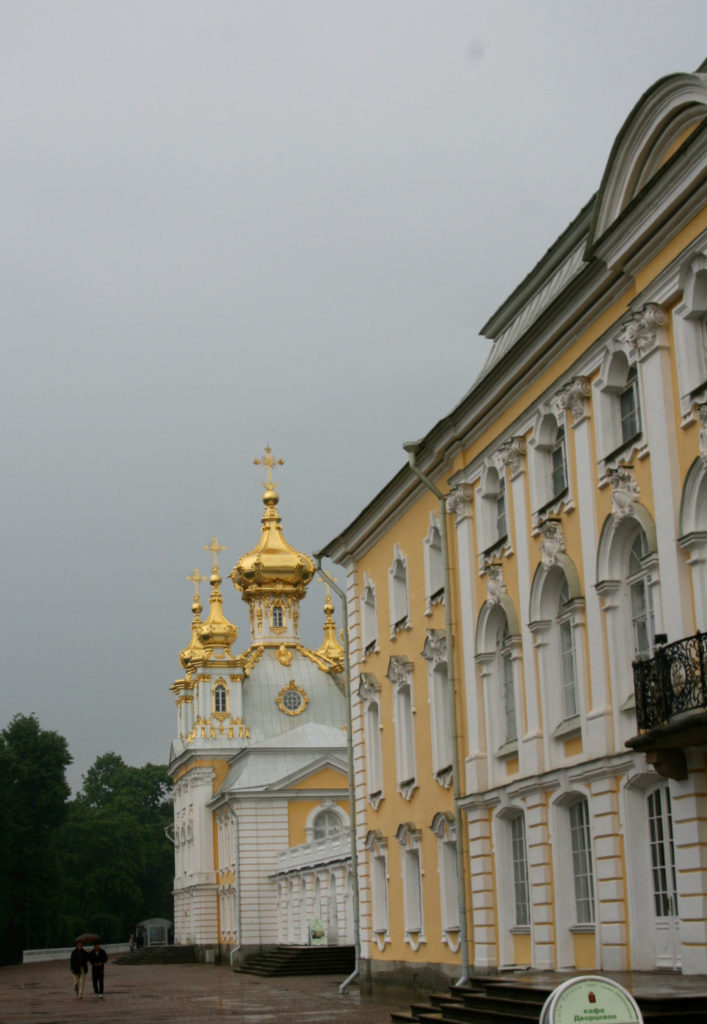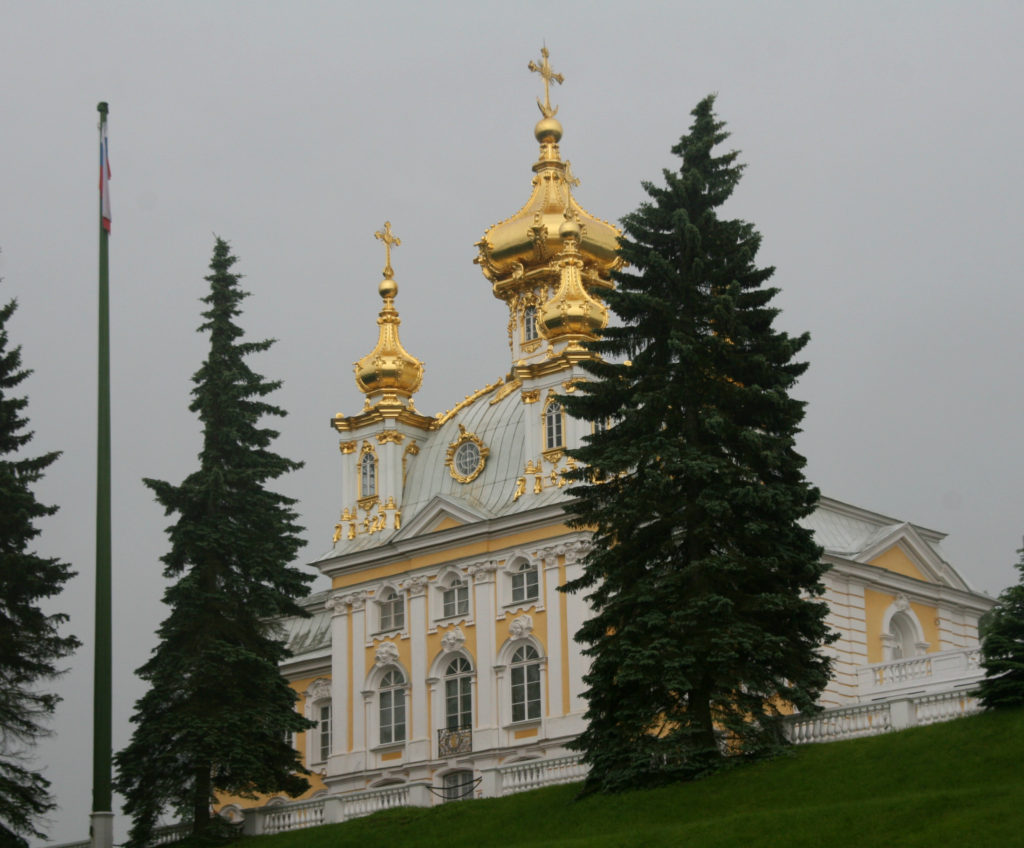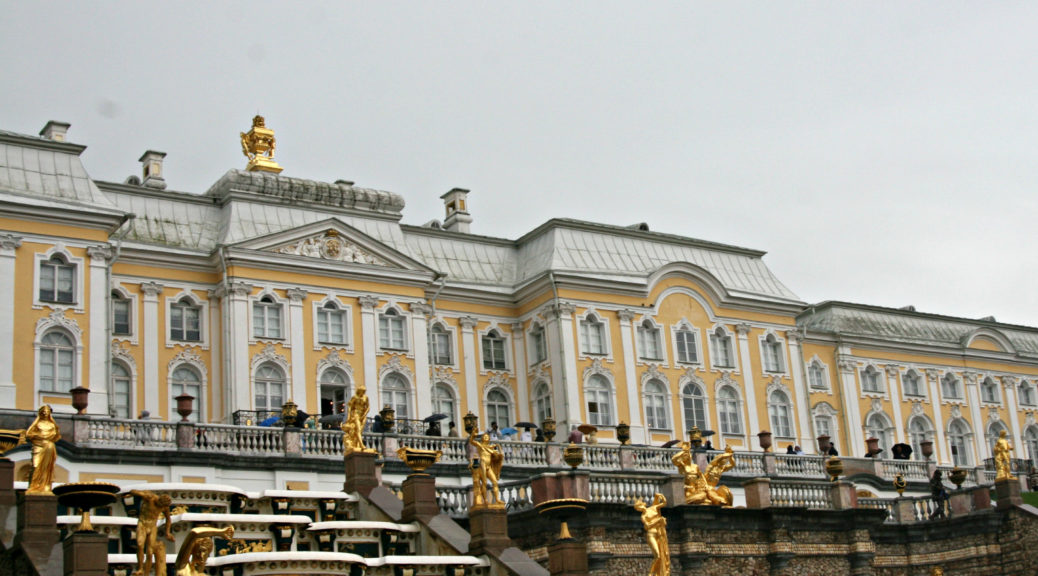
Peterhof
Our next port of call was St. Petersburg, Russia where we would spend two days. St. Petersburg was founded in 1703 by Tsar Peter the Great. Today it is the second largest city in Russia and is considered Russia’s cultural center. It is one of three federal cities in Russia and is an important port on the Baltic. The pictures below are ones we took as we were driving through St. Petersburg on our way to to our first stop. We saw beautiful buildings (examples in the first two pictures), apartment buildings (third picture) and even palaces (the last picture in this section is of the Konstantin Palace).
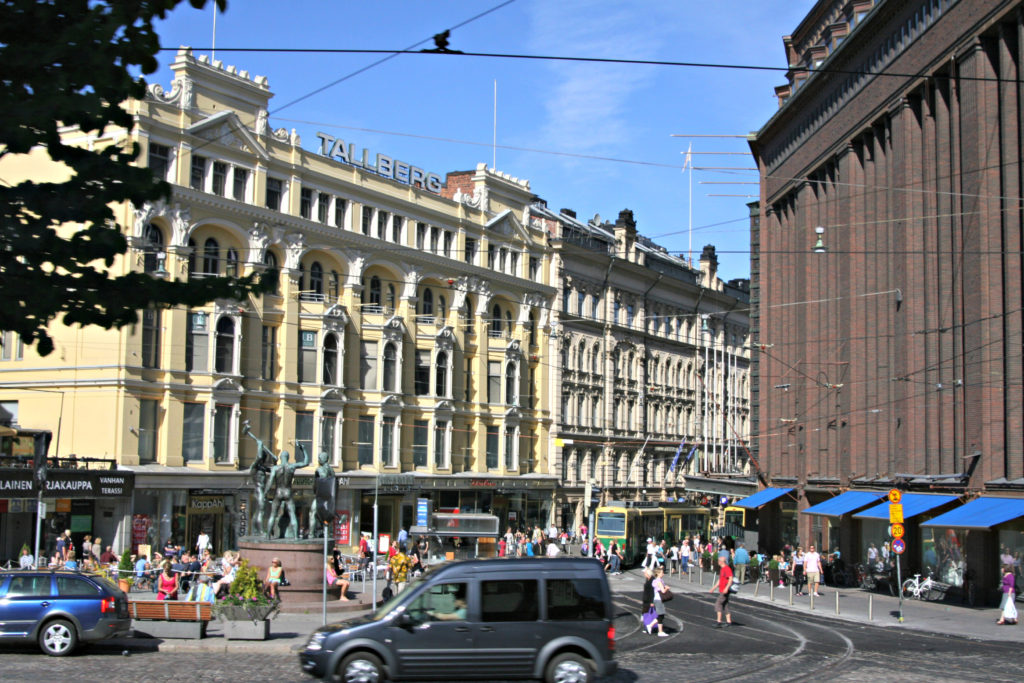
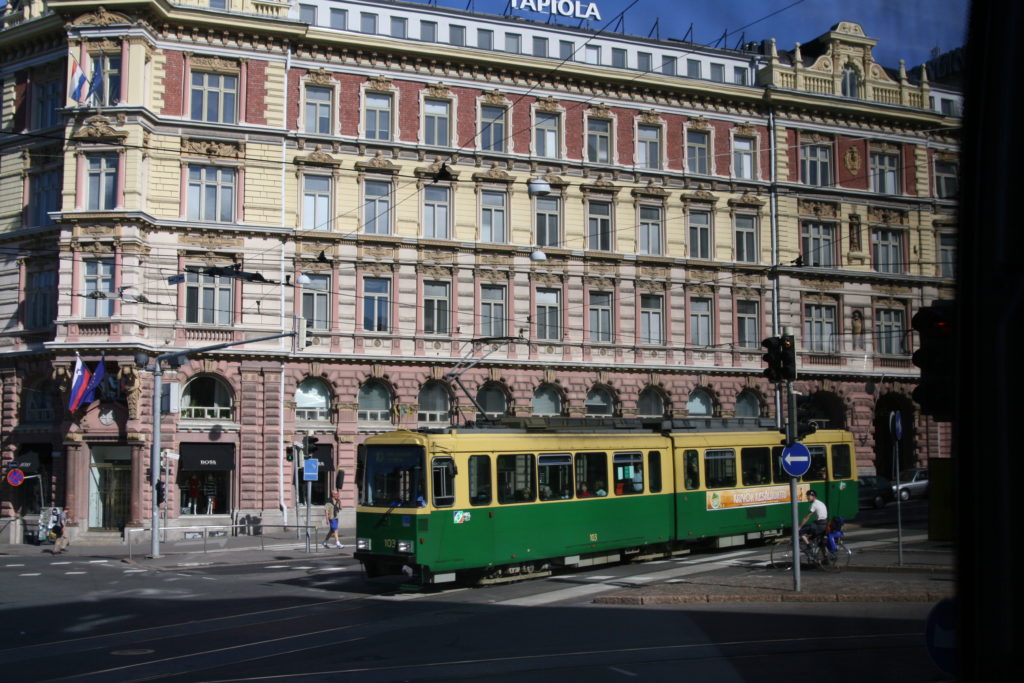

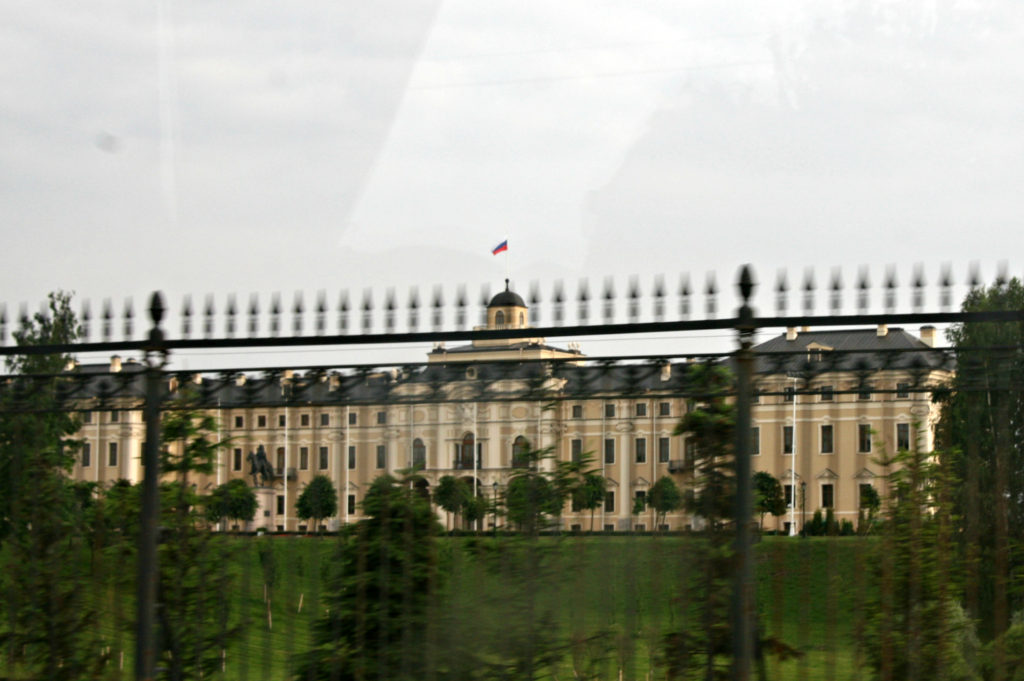
Our shore excursion was another “Best of” which would enable us to see some of the top attractions in St. Petersburg. It was a two day excursion – we would spend the night back aboard our cruise ship. We were very lucky to have a high school history teacher, Anna, as our tour guide. We saw so many beautiful things that the information I share about St. Petersburg will be across several blog posts.
Our first stop was the Peterhof Palace and Grounds. Peterhof is translated as “Peter’s Court.” The site was commissioned by Peter the Great and modeled after the Palace of Versailles in France. Peter the Great was very involved in the original design of the complex. In fact, some of his original drawings exist to this day. The Peterhof Palace and Grounds is a UNESCO World Heritage Site. The original palace was completed in 1725 but later demolished and rebuilt between 1745 through 1755.
Our bus dropped us off at the Upper Gardens, which in Peter the Great’s time was called Peter’s Kitchen-Garden. Vegetables and medical herbs were grown and fish were raised in the pond. The ponds, in addition as the home for fish, also supplied water to the Great Cascade located on the other side of the Grand Palace. In the late 1700’s, the Upper Gardens were redesigned as a “regular” park.
The weather was very threatening the day we visited, but added some intrigue to my pictures. I have included the statue of Diana in the Western Square Pond and some of the other statues located in the Upper Gardens. Diana is the goddess of hunting and is depicted in the first picture below. Part of the Grand Palace is also pictured; this was taken from these gardens. The beautiful dome is of the Armorial Block which is a pavilion of the Grand Palace.
After some time in the Upper Gardens, we went into Peterhof Palace. We were not allowed to take pictures, but I have included one from the Shutterstock website of the Throne Room. Like many of the cathedrals we have visited, the walls, ceiling and floor are all beautiful. The Throne Room was originally designed in 1753, redesigned in the late 1770s and most recently restored in 1969. It is about 78 feet by 42 and has a height of just over 40 feet. The Throne Room has beautiful windows with mirrors in between them. The Upper and Lower Gardens can be viewed from the windows. There are twelve chandeliers made of crystal glass. You can see the throne at the far end of the room. Behind the throne is a statue of Catherine II sitting on her horse. The Throne Room was just one of the many beautiful rooms inside the Palace.

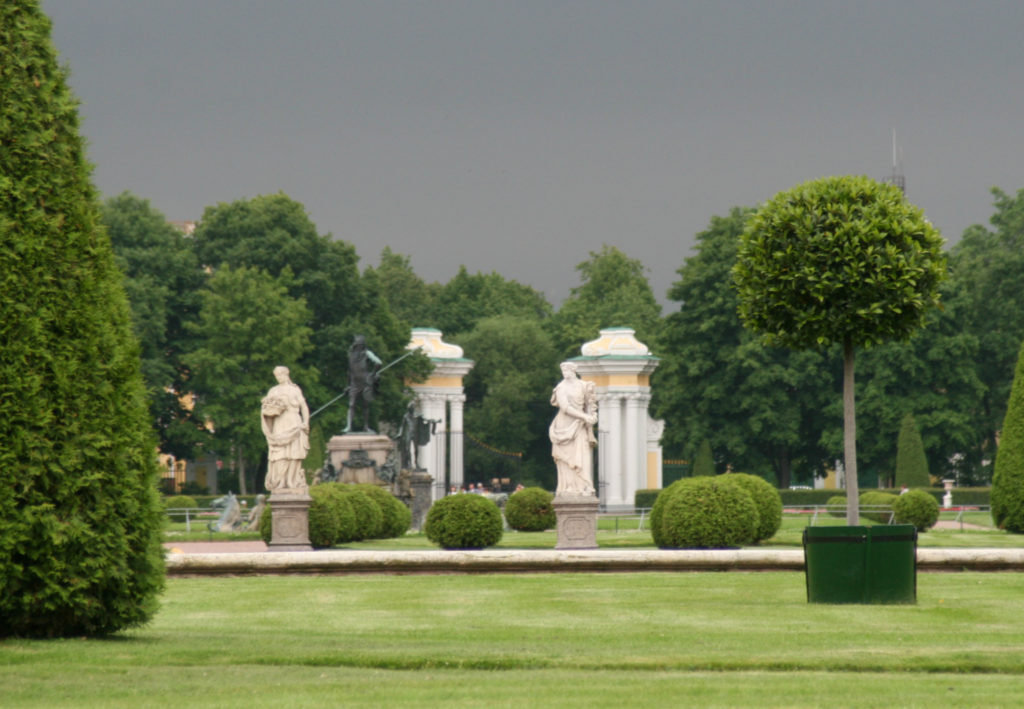
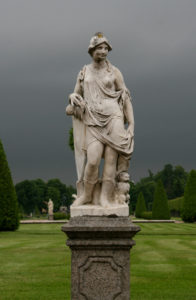
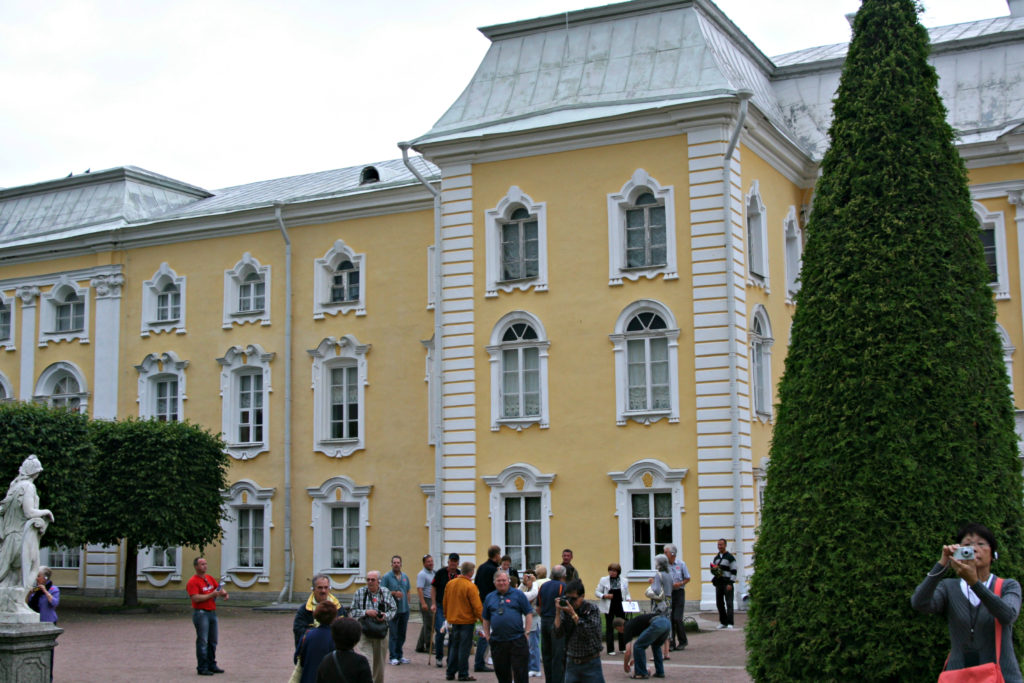
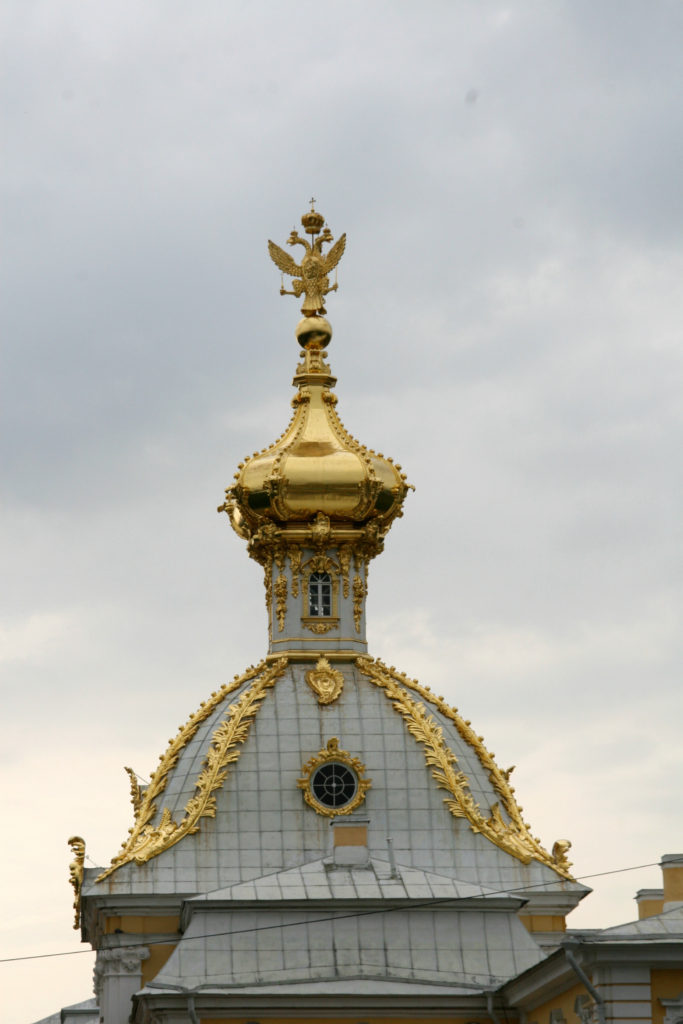

After touring the interior of the Palace and making a stop at the obligatory gift shop (which actually had some very nice things), we stepped out onto a balcony which gave us beautiful views. In the first picture below, you can see part of the Great Cascade in the foreground and one of the two Vorinikihin Colonnades toward the back of the picture. The two Colonnades are on each side of the Sea Canal which you can see in the third picture. The Colonnades were first built of wood and brick in 1722. They were replaced in 1803 with brick colonnades. These were covered with marble in 1853. There is a gold cupola on the roof and three gold fountains over the colonnade.
The Samson Canal, or Sea Canal (third picture), was originally the main entrance to the complex from the Gulf of Finland. Construction of the canal began in 1714. It gradually went out of use but has been maintained as both a decorative element and an example of the hydro-technical capabilities of the time.
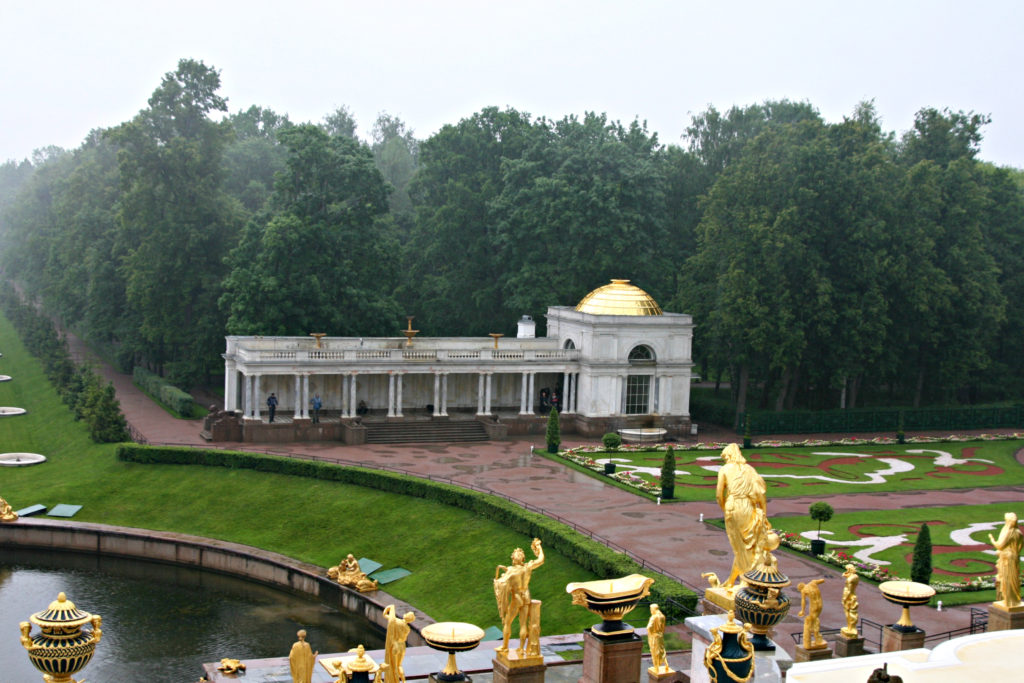

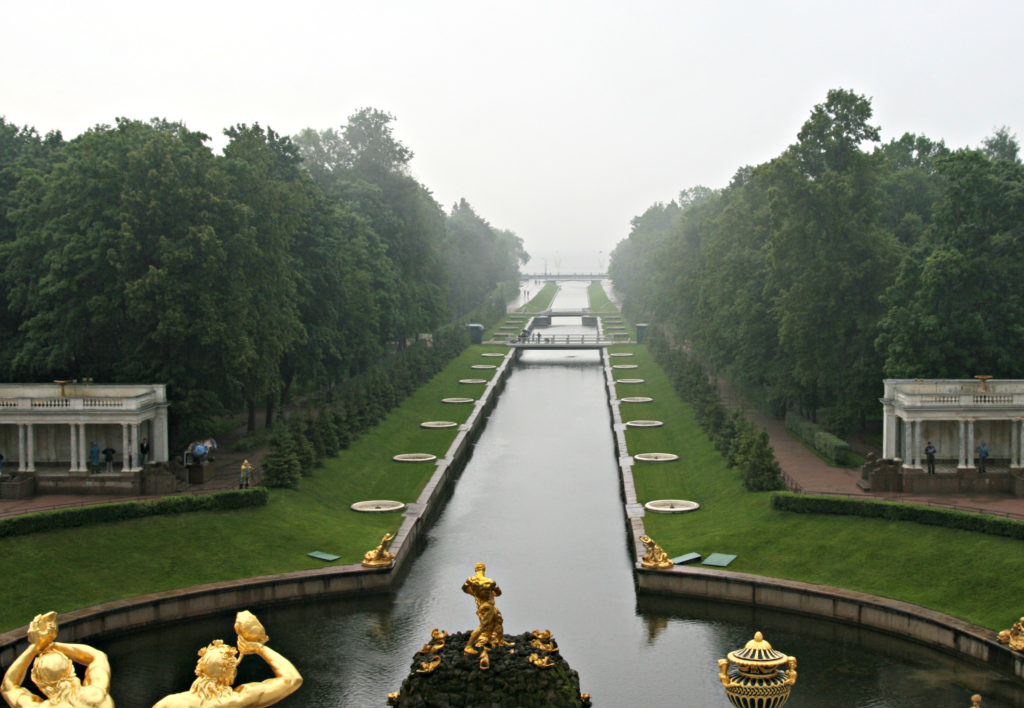
When we went outside to the Lower Gardens, there was a light but steady rain in the air. About half of our group – almost all after traveling thousands of miles – went to the bus. As I look back at these pictures, I am amazed at what they missed. To me, the most spectacular part of the Lower Gardens area is the Great Cascade. The quote that follows is from a book entitled Peterhof by Nina Vernova and Vadim Znamenov:
Remarkable for its dimensions, abundance of water, wealth of its sculptural decor, graphical variety of water jets, compositional unity and expressiveness of all parts, this magnificent example of Baroque art ranks among the best-known historical fountain structures of the world…The present-day appearance of the cascade has taken shape in the course of a hundred years, but the concept of its composition was suggested by Peter the Great himself.
Water cascades down seven steps. In 1799, lead statues began to be replaced with bronze ones. There is a fountain at the base of the cascade. The statue is of Samson tearing open the jaws of a lion; the statue dates back to 1734. This was the 24th anniversary of the Battle of Poltava, a battle during the Northern War. The statue represents Russia’s victory over Sweden, Russia being represented by Samson and Sweden being symbolized by the lion which is a part of Sweden’s coat of arms. The original statue was stolen by the Nazis during World War II. Using photographs of the original statue, it was recreated in 1947. In retrospect, I wish I had walked part way along the Sea Canal and then looked back to take a picture which would have taken in the entire Great Cascade. If you visit Peterhof, I would encourage you to take this walk and enjoy that perspective.
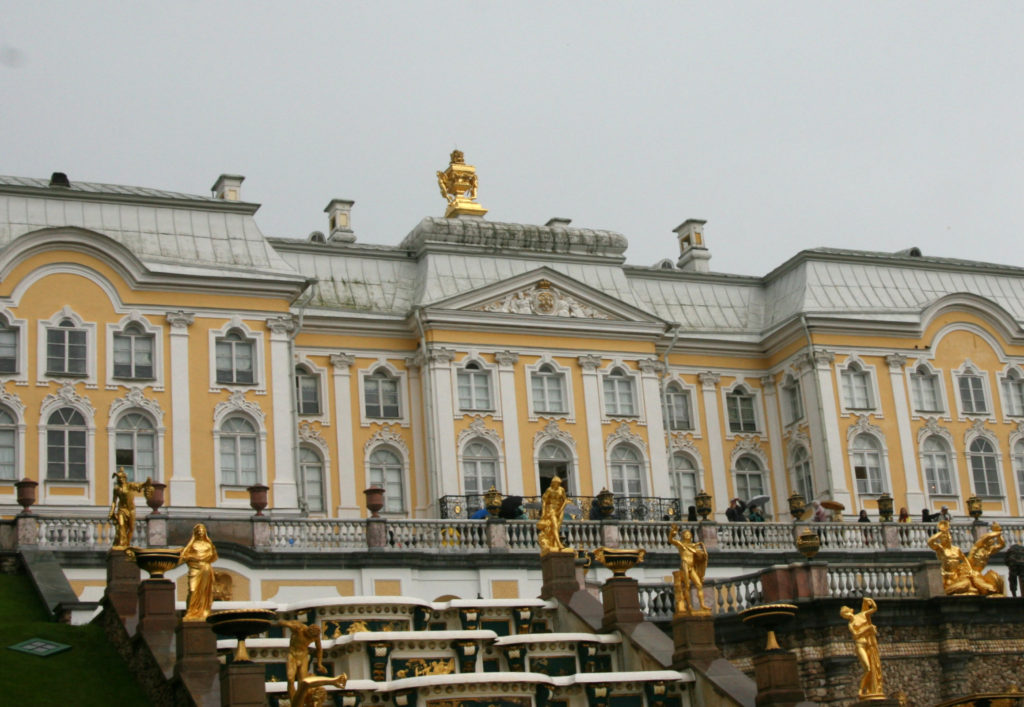
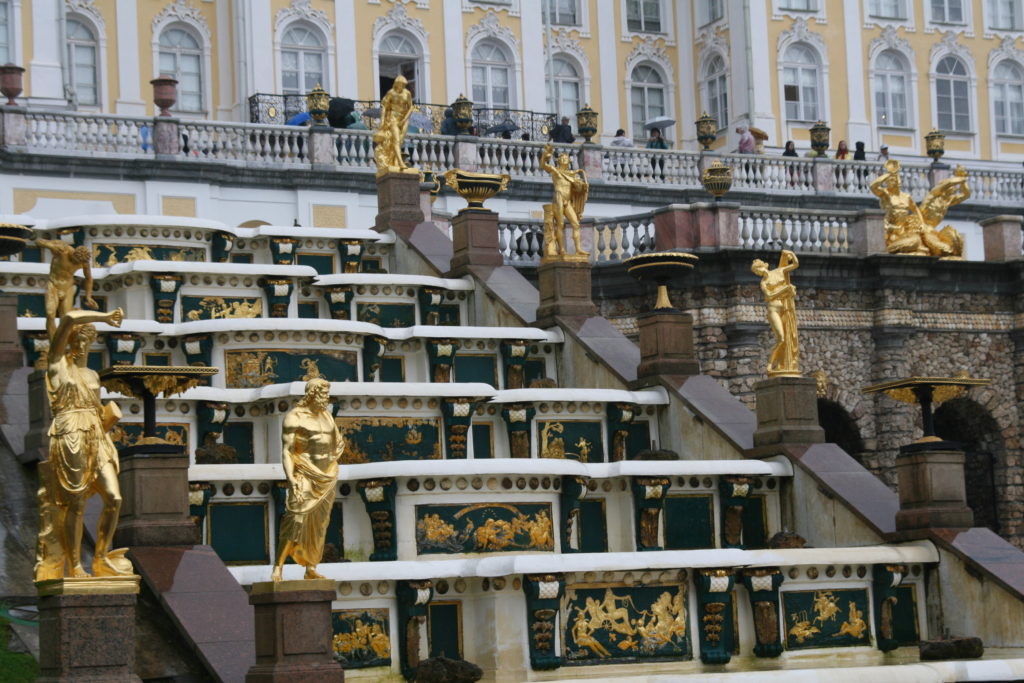


The Lower Gardens have over 150 fountains. We walked to the East Section of the Lower Gardens. This part of the park is also known as the Monplaisir Ensemble and was another idea of Peter the Great. He created the the plans for this area, including the fountain system. The work began in 1714. In the years that followed, others, including Empress Elizabeth, Peter the Great’s daughter, Catherine the Great and Nicholas I, continued to develop and expand the area.
These are some of the fountains we saw. The first (and there are actually two of them) are known as the Roman Fountains because of their similarity to the fountains at St. Peter’s Basilica in Rome. These fountains were created in 1738-1739. The bowls of the fountain, which were originally wood, were replaced with ones made of stone in 1800. The base of the fountains are decorated with marble and sculptures, parts of which are gold.
The third and fourth pictures are of the Chessboard Hill Cascade. Water shoots out of the dragons’ mouths and flows down four steps. Statues on either side of the cascade were created by Italian sculptors and represent ancient gods. The cascade was not originally painted as a chessboard and was known as the Dragon Hill Cascade. Several years later it was painted as a chessboard and the name changed.
The last picture in this section is of the Orangery Fountain. The gold-covered statue sits in a small pool and features a triton opening the jaws of a sea monster. Four turtles sit around the “island” representing north, south, east and west.
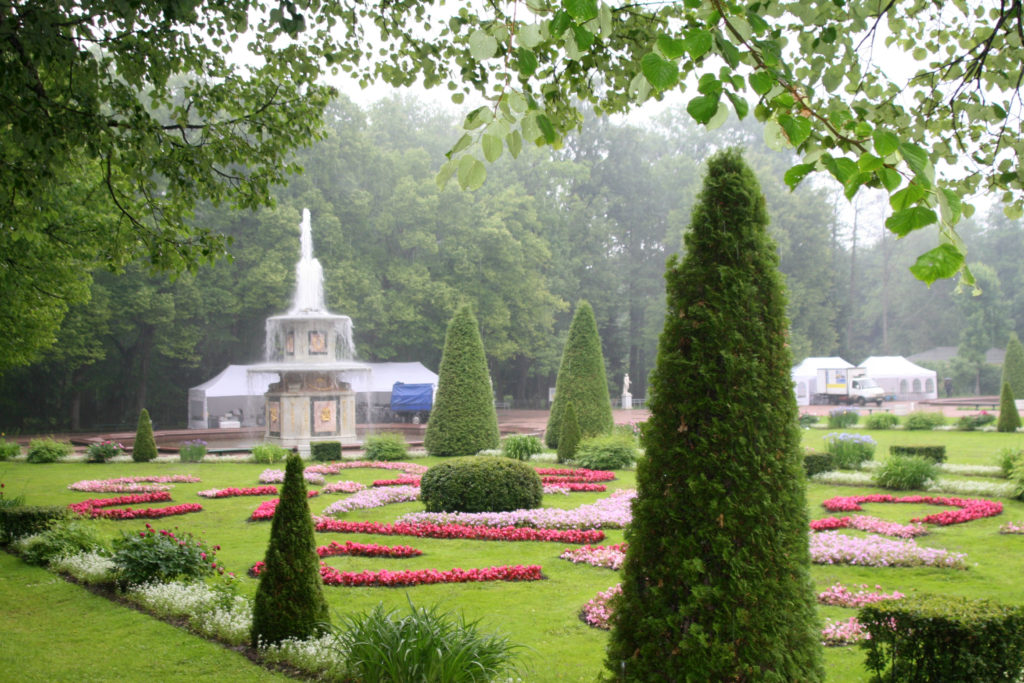
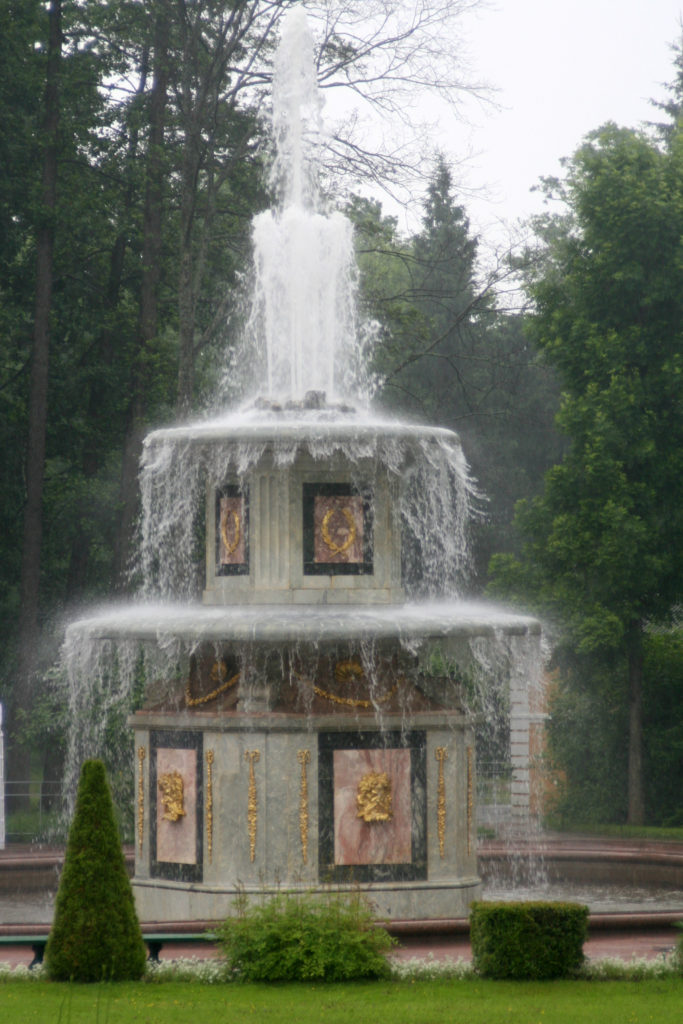
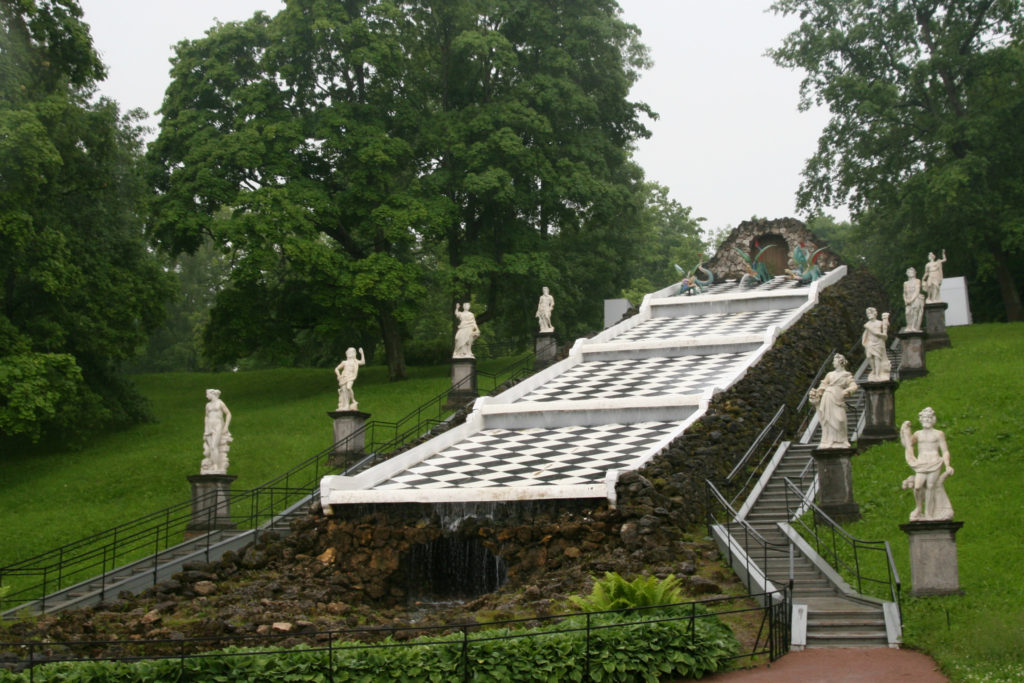
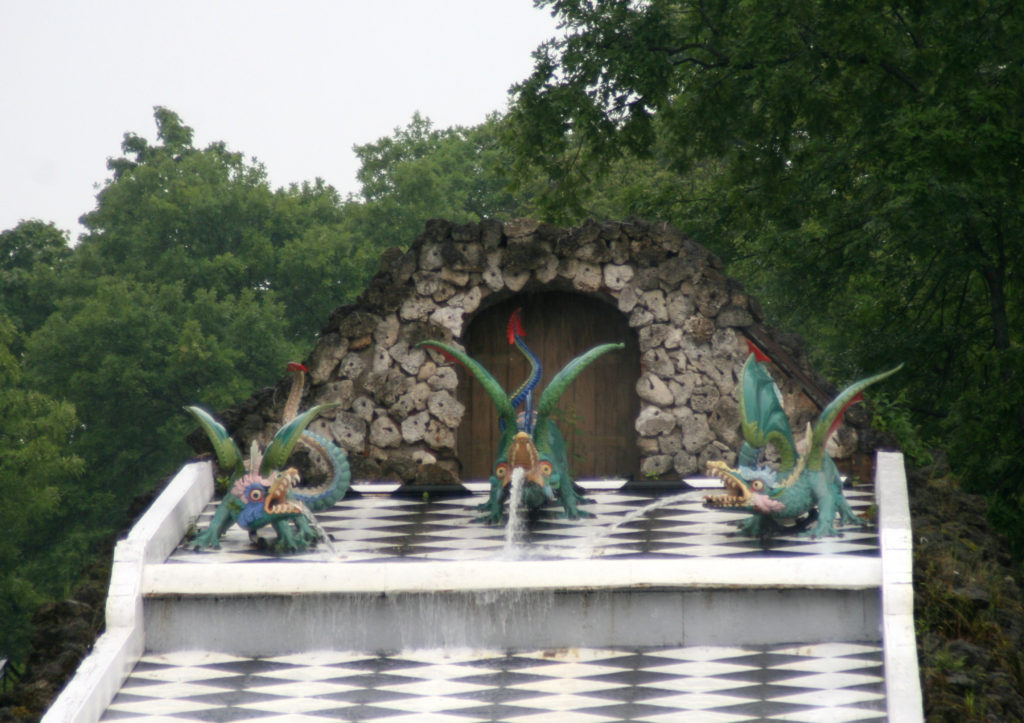
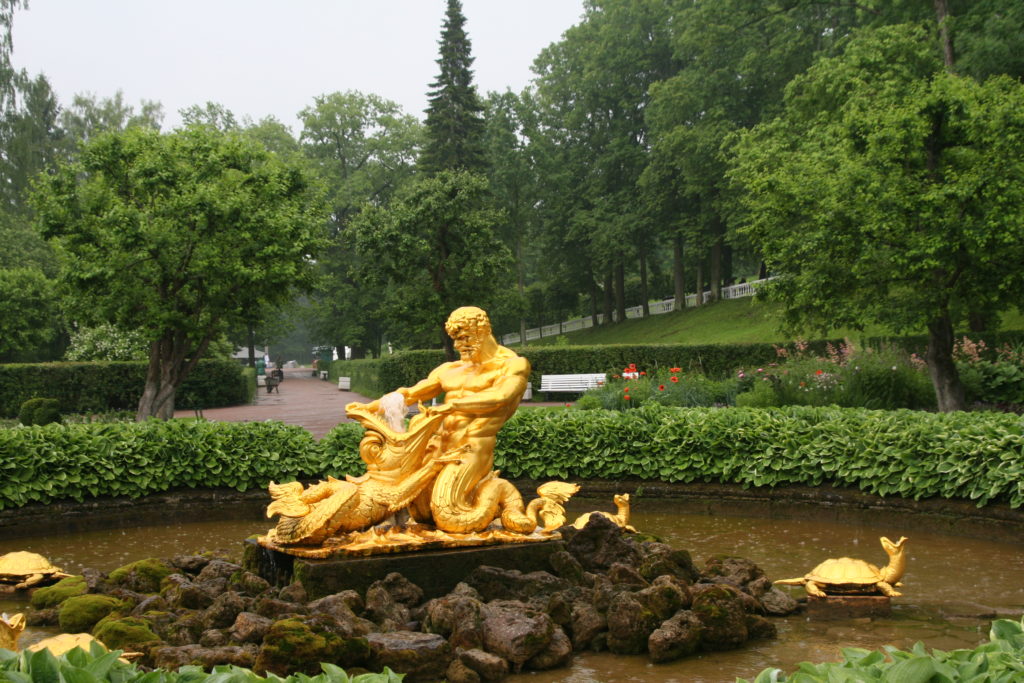
These last pictures are of the Church of Saints Peter and Paul at the Great Peterhof Palace. It is beside the Peterhof Palace, but on the opposite side of the Armorial Block. It was the site of royal feasts and baptisms and weddings of members of the royal family. The last baptism was performed in 1904. Jump ahead to 1952 – it was then the Armorial Block and the church were restored. Historically it had five domes, but because of Russia’s atheism, there was thought to only give it one dome during the restoration. Ultimately all five domes were included. The interior of the church was still undergoing restoration at the time of our visit (2010). Peterhof was indeed beautiful – we were surprised to see such beauty, especially churches, in Russia. I hope you have the chance to visit Peterhof – it is a real treat!
